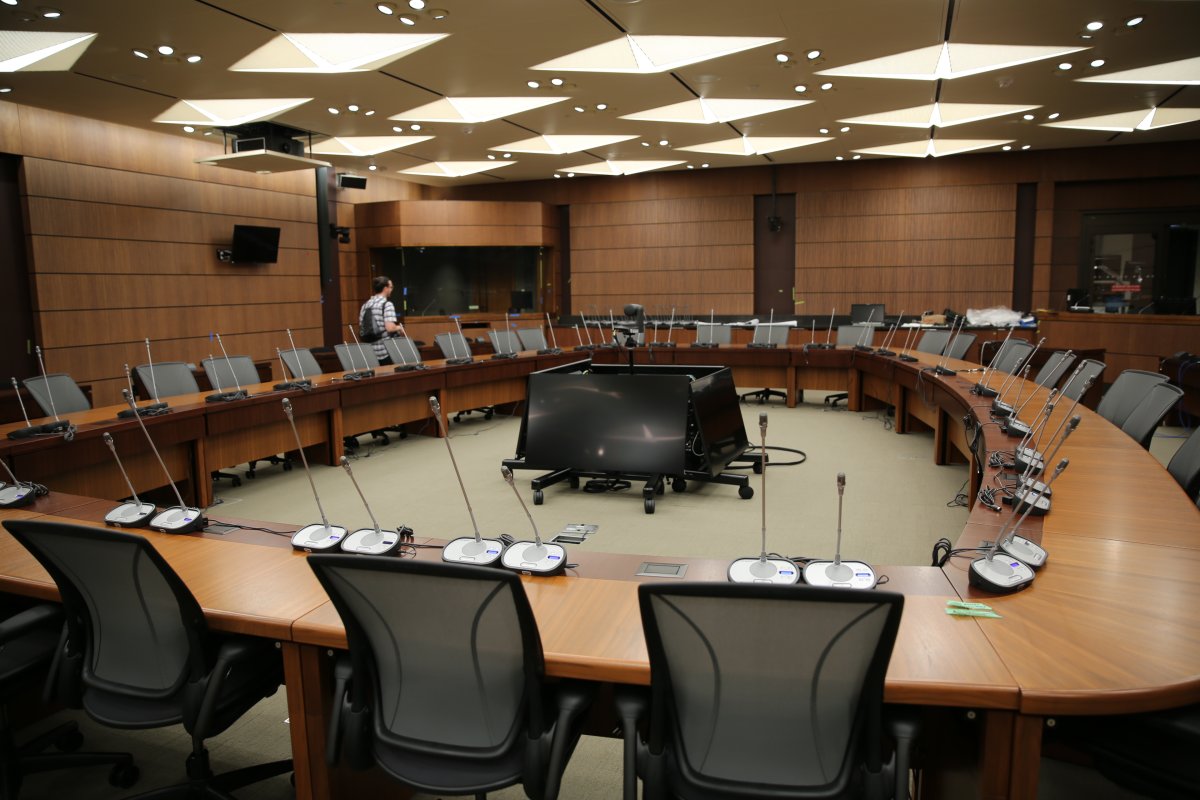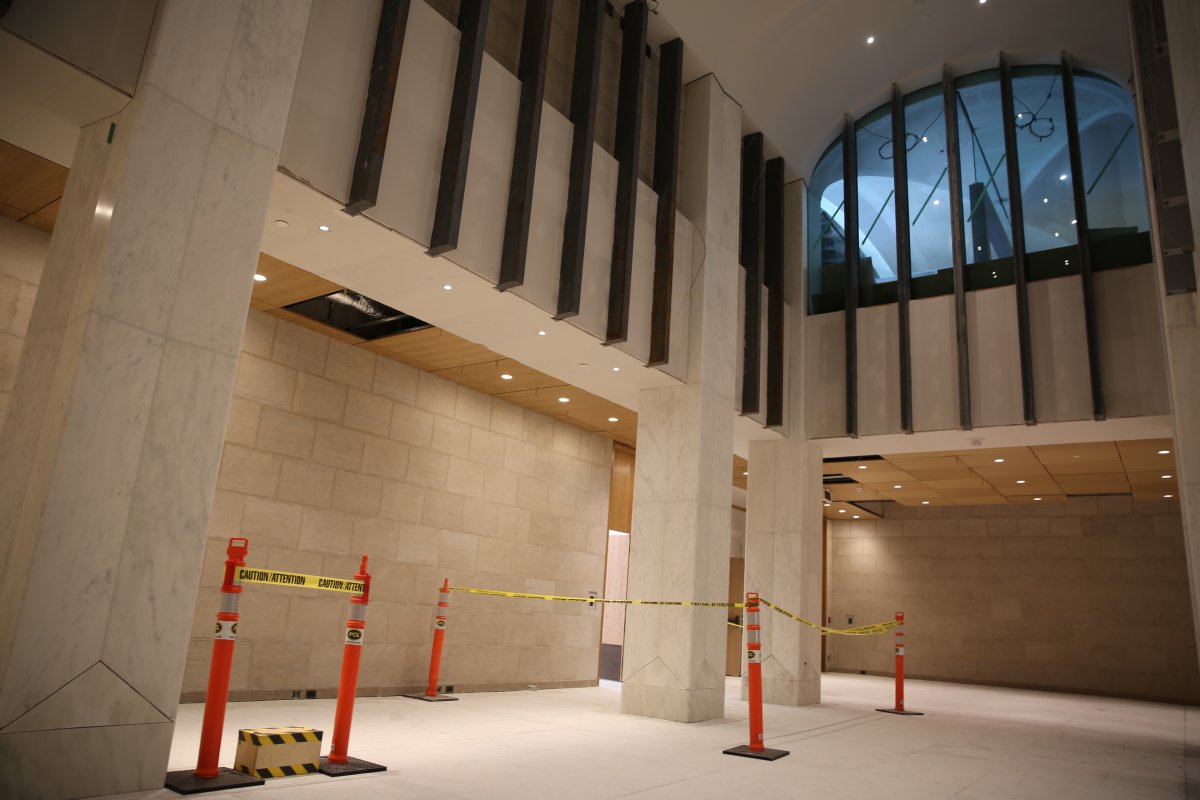OTTAWA – One of Canada’s most ambitious renovation projects is entering the home stretch.

With the final tiling, painting, and landscaping underway, Parliament Hill’s West Block is nearly set to welcome Members of Parliament to the new House of Commons.
Centre Block, where the Commons now sits, is slated to be shut down for a decade of badly-needed renovations.
READ MORE: Parliament Hill’s Centre Block closed for a decade of renovations
In its place is an unprecedented project that transforms the courtyard of a 150-year-old building into a state-of-the-art Chamber which marries soaring steel arches and a glass ceiling with Parliament’s iconic copper roofs and masonry.
The goal was to keep the House of Commons on Parliament Hill during the Centre Block renovations. The only area large enough was the exterior courtyard of the West Block.
The challenge was to enclose it, all while enhancing and preserving the heritage building.
The solution was building a self-contained, autonomous structure that held a glass roof on its own foundations and complemented the neo-gothic architecture of Parliament Hill.
- Alberta to overhaul municipal rules to include sweeping new powers, municipal political parties
- Norad looking to NATO to help detect threats over the Arctic, chief says
- Grocery code: How Ottawa has tried to get Loblaw, Walmart on board
- Military judges don’t have divided loyalties, Canada’s top court rules
“The most important objectives of the work we are carrying out is making sure that these beautifully restored, heritage buildings meet the full requirements of Parliament and inspire pride in Canadians for generations to come,” said Rob Wright of Public Services and Procurement Canada, the department overseeing the project.
The project has been in the works for nearly eight years and has a budget of $863 million. The move from Centre Block was scheduled to happen this summer.
READ MORE: Behind the scenes of The West Block’s renovations
But Members of Parliament are going to have to wait an extra four months to move into their new digs. A parliamentary committee voted earlier this week to delay moving day to ensure the renovated West Block is full functional and operational. If everything goes to schedule, the first question period in the new space will be in early 2019.
“Parliament is a unique environment that requires a fully functional and operational facility with uninterrupted services. Taking the time to ensure that the West Block is fully functional with all required technology, that it provides safe and secure facilities, and that it has the appropriate level of fully trained service staff is imperative to sustaining the work of Parliament,” said a statement from House of Commons Speaker Geoff Regan.
The day after the announcement, media were given a tour of the West Block as the construction team works towards their new deadline. Here’s a look behind the scenes of this week’s tour.












Comments